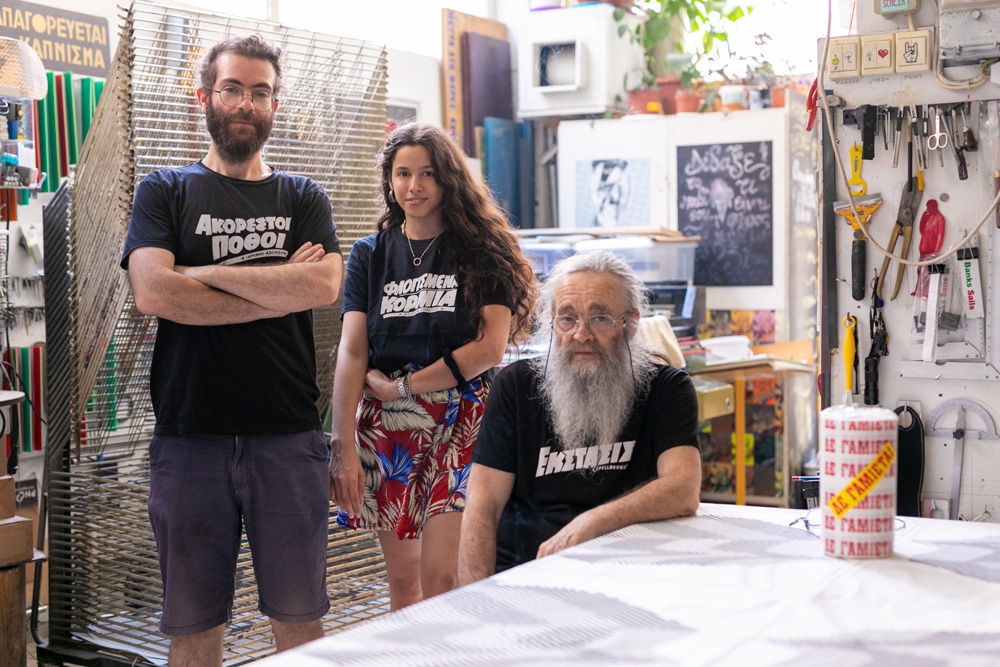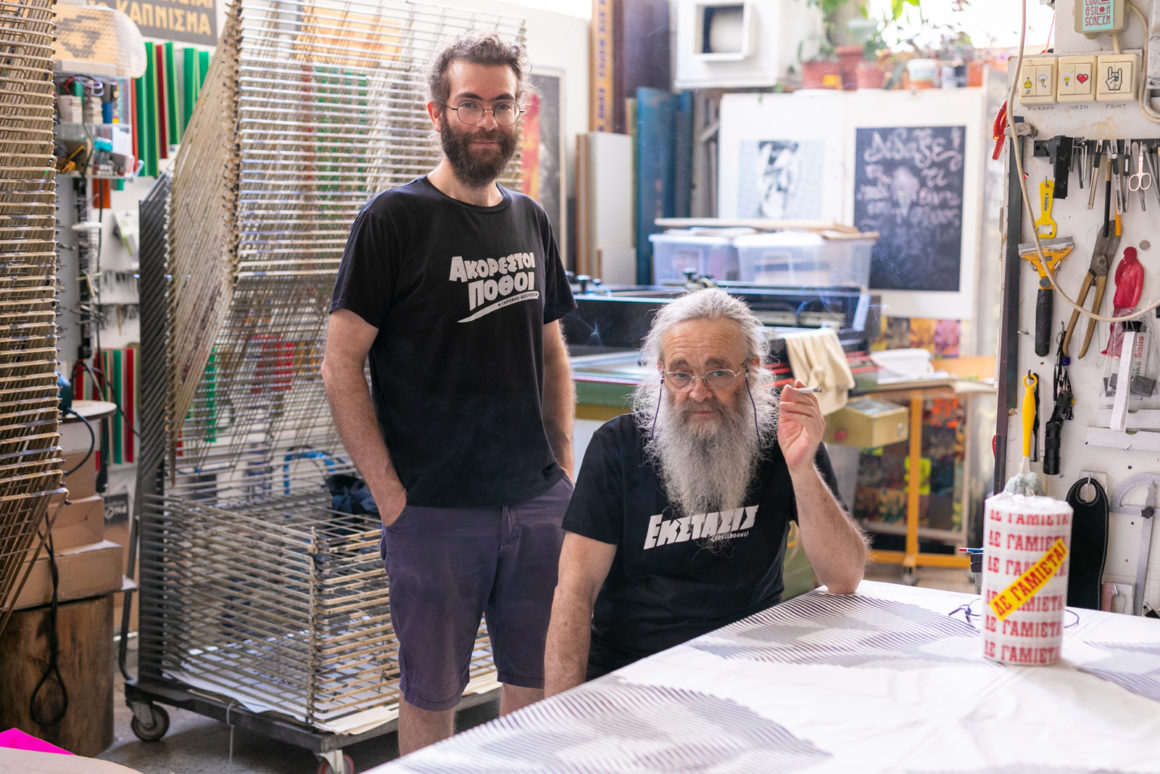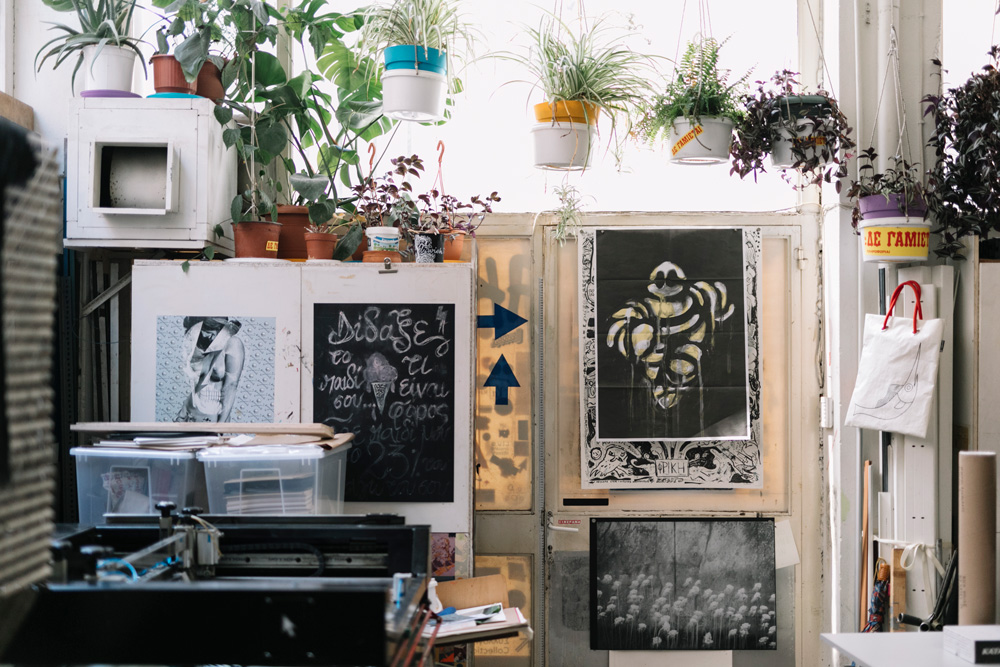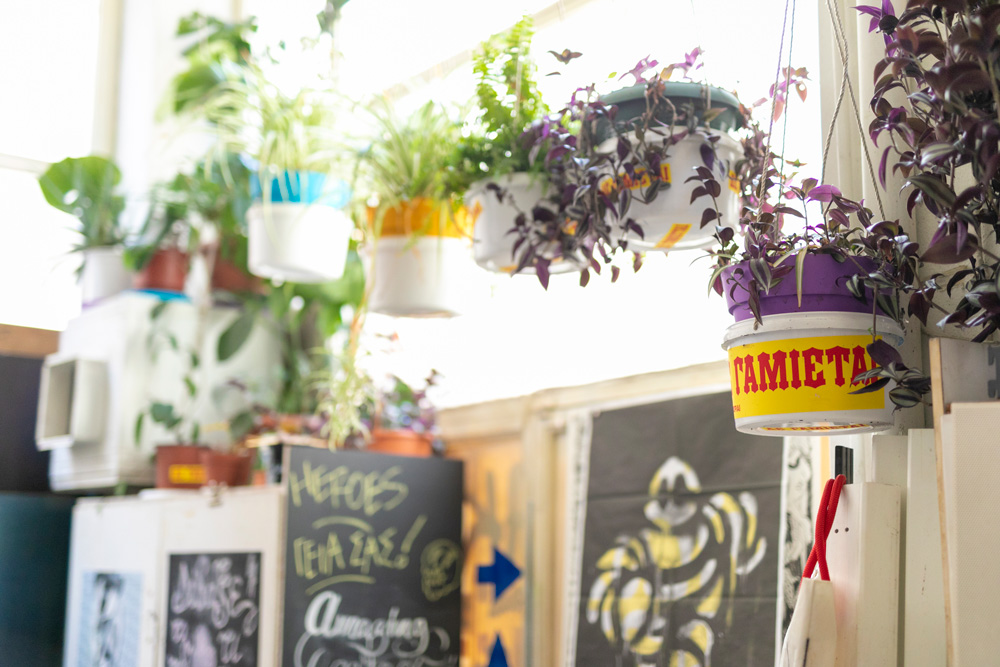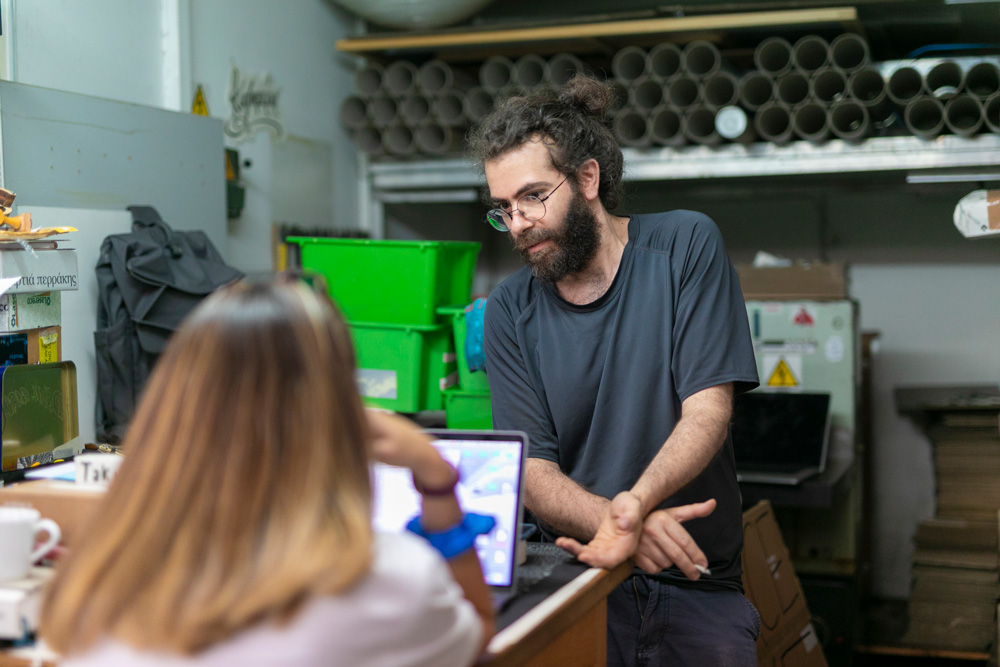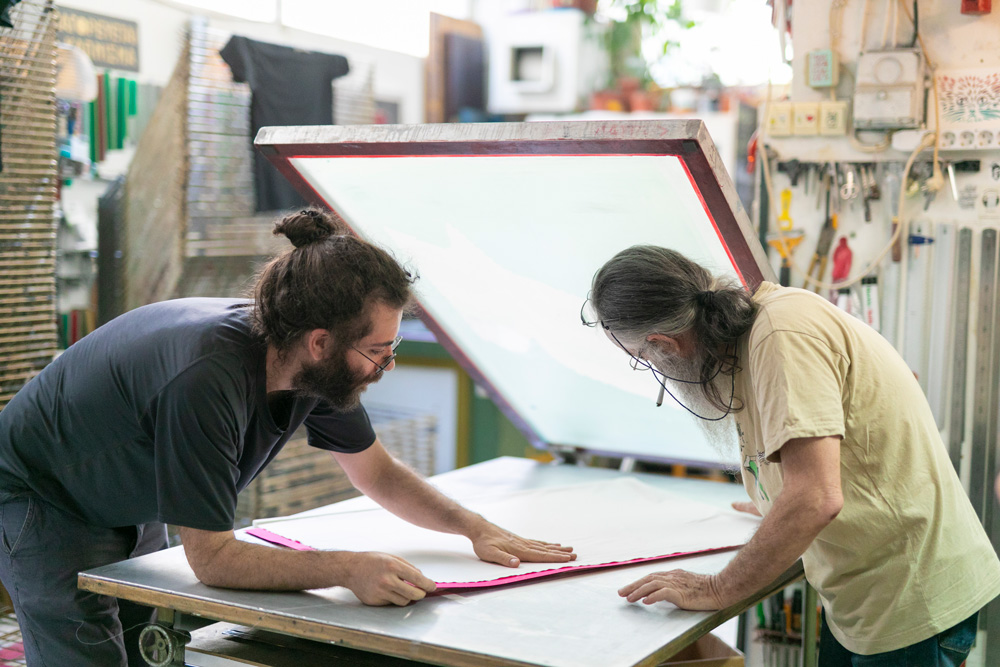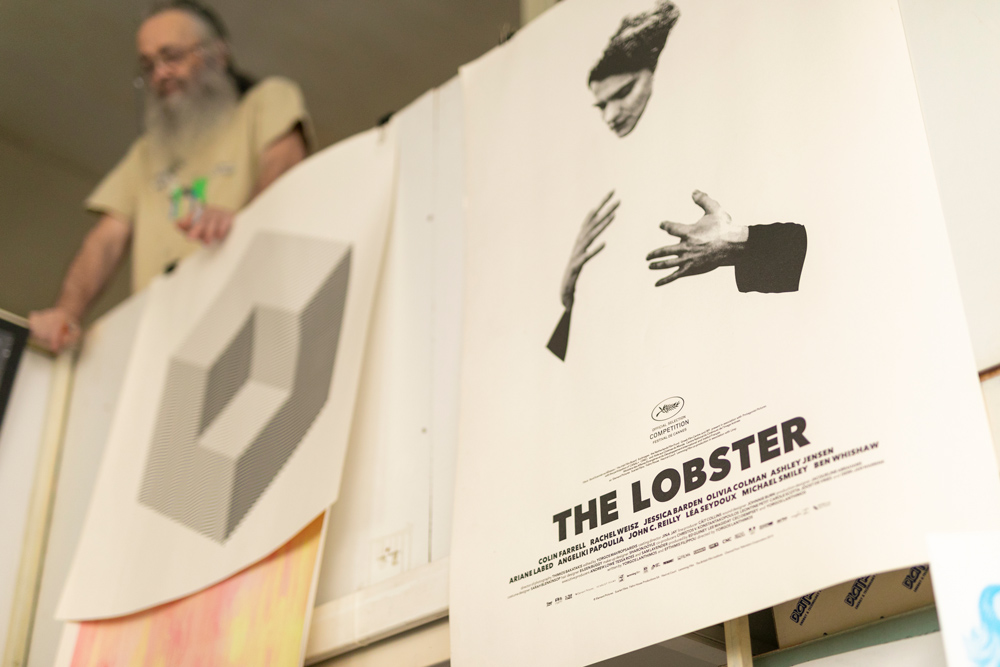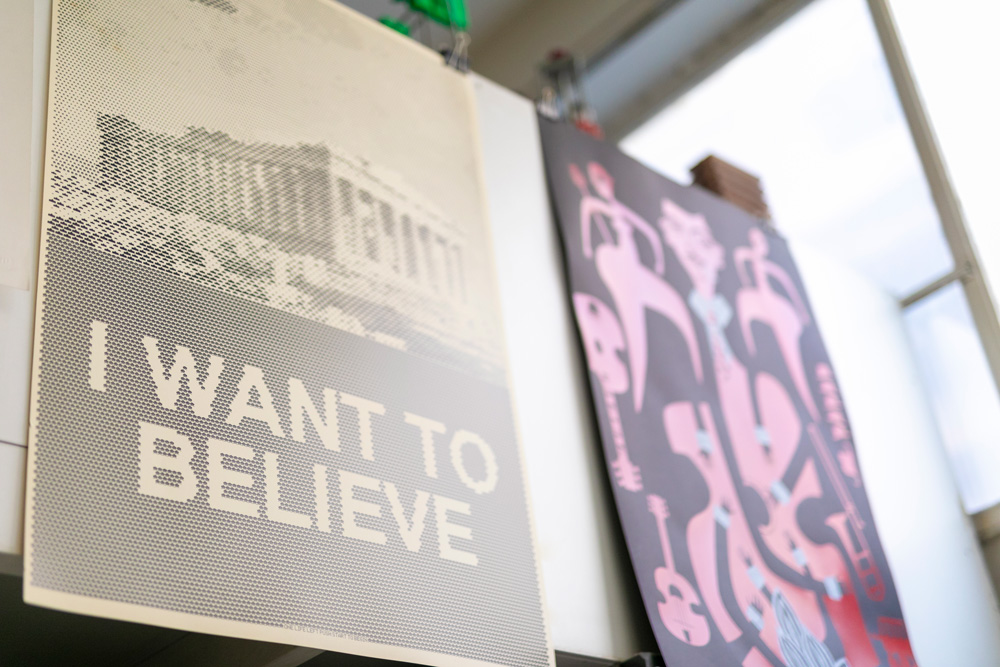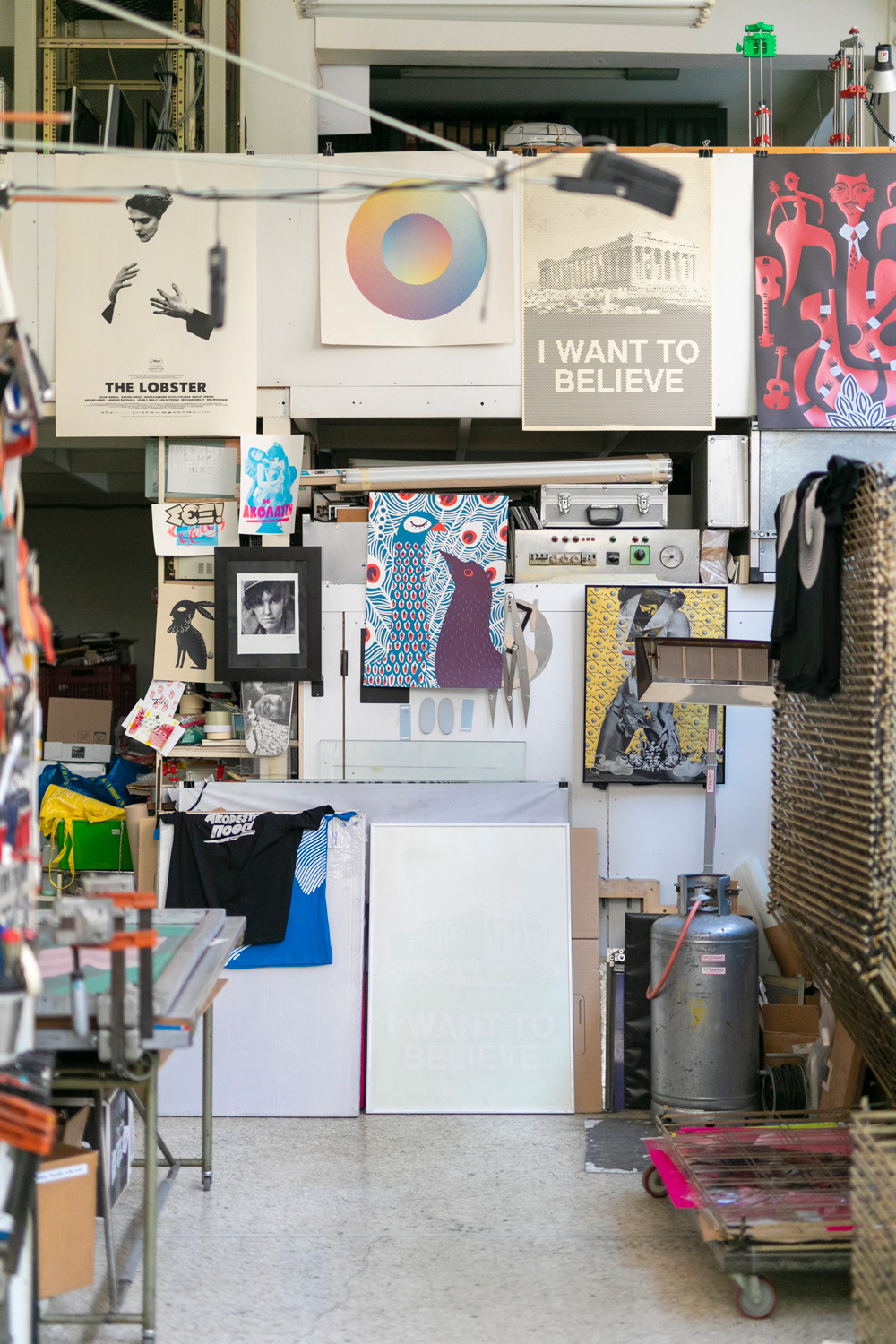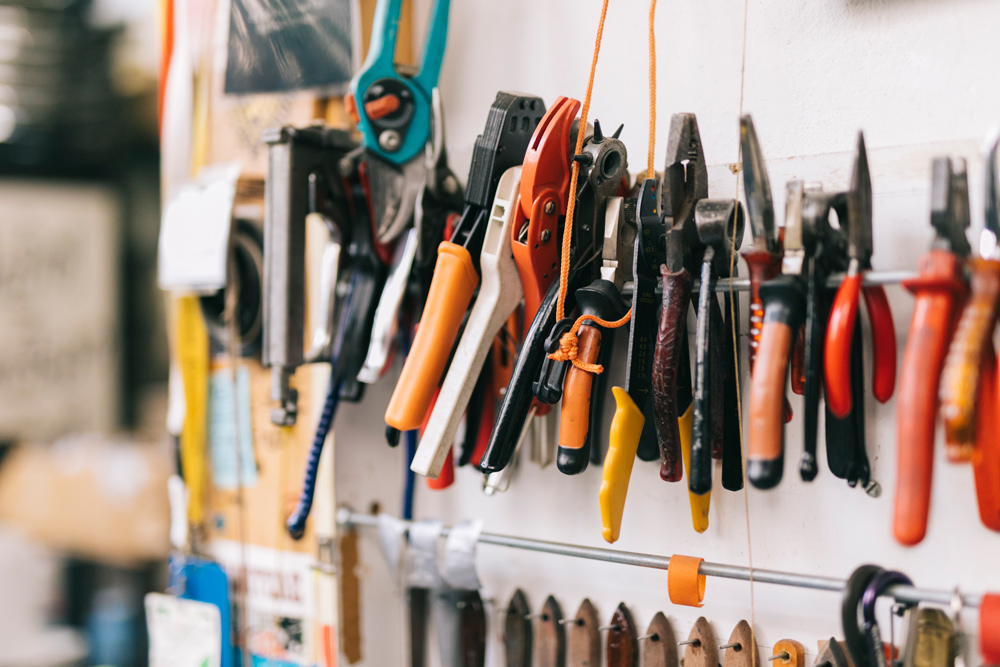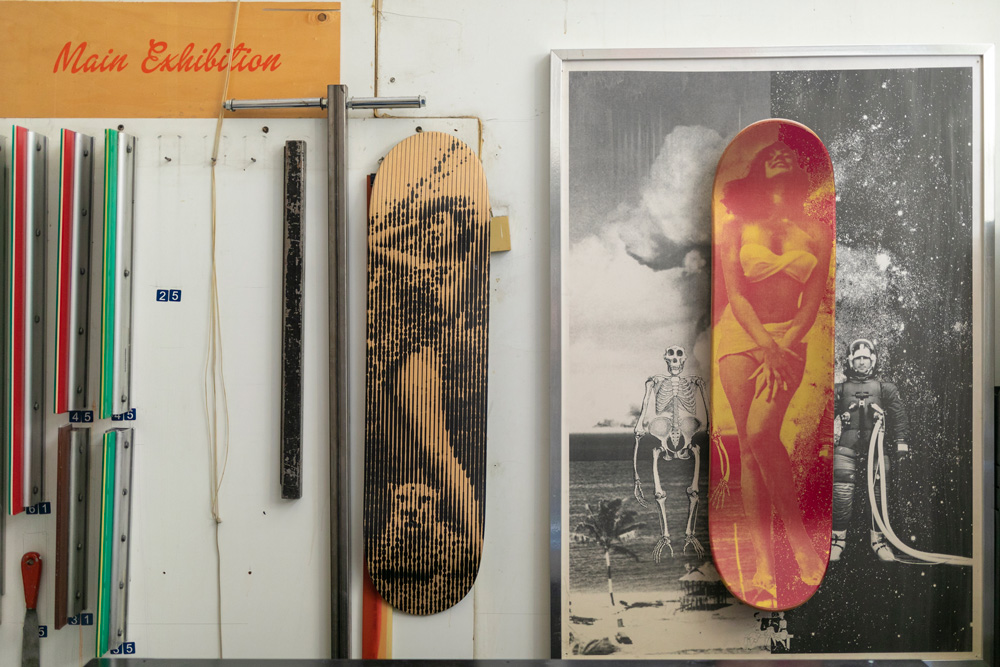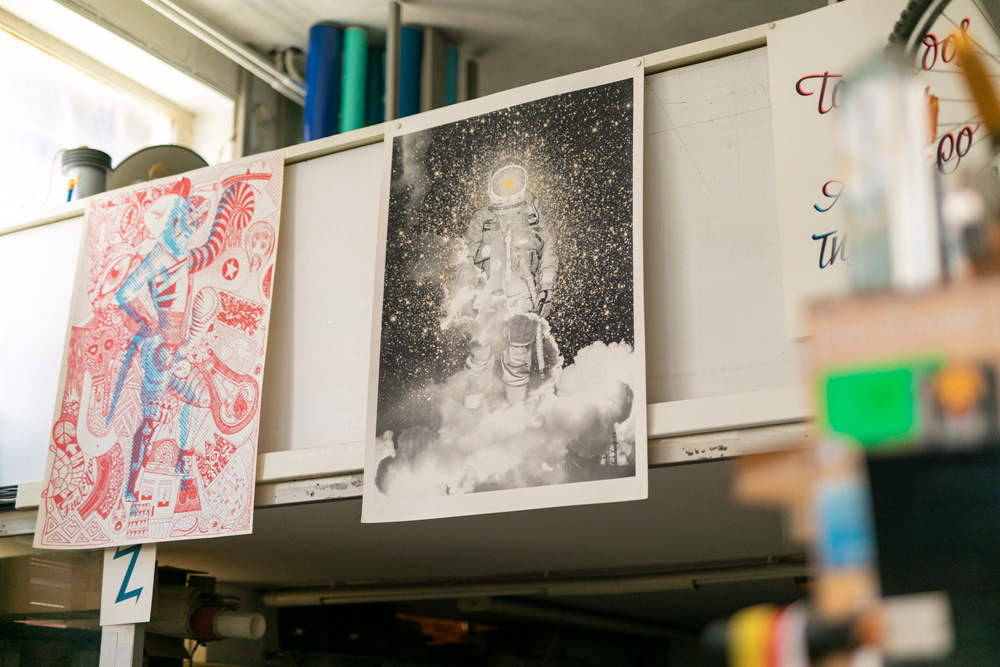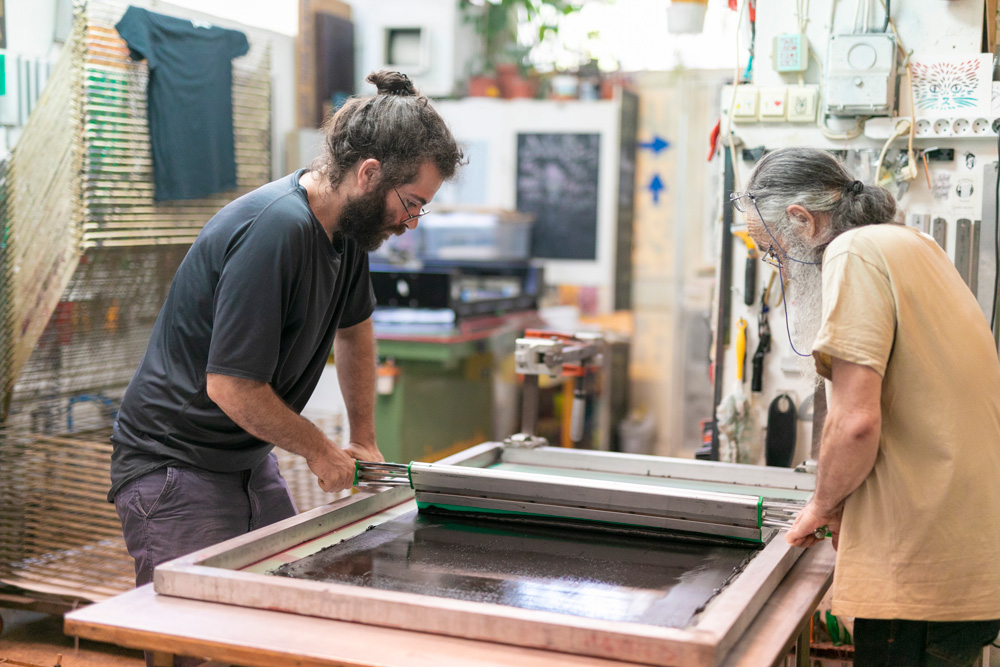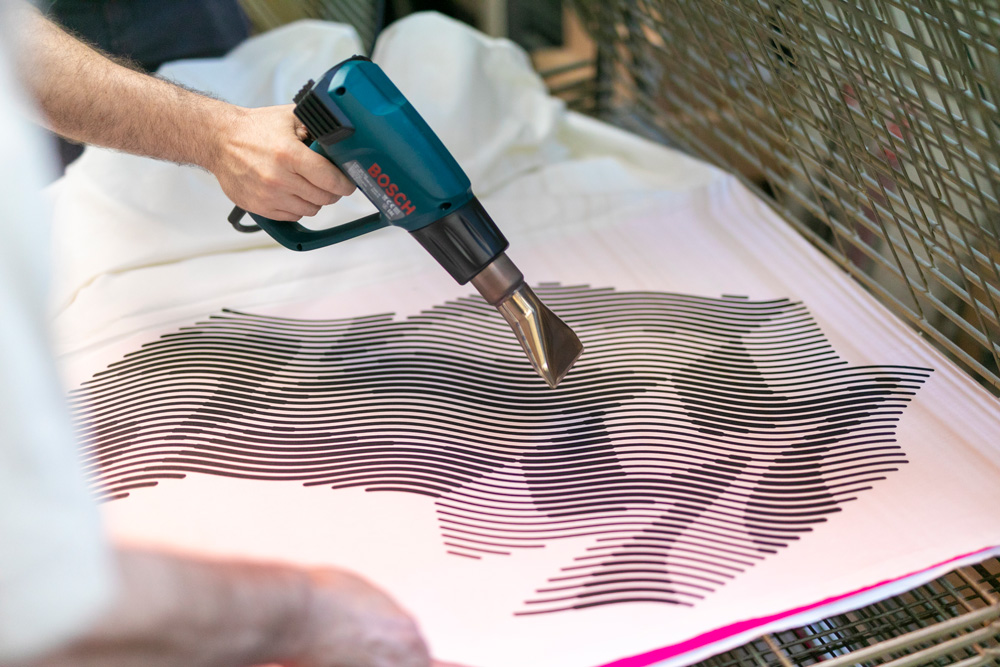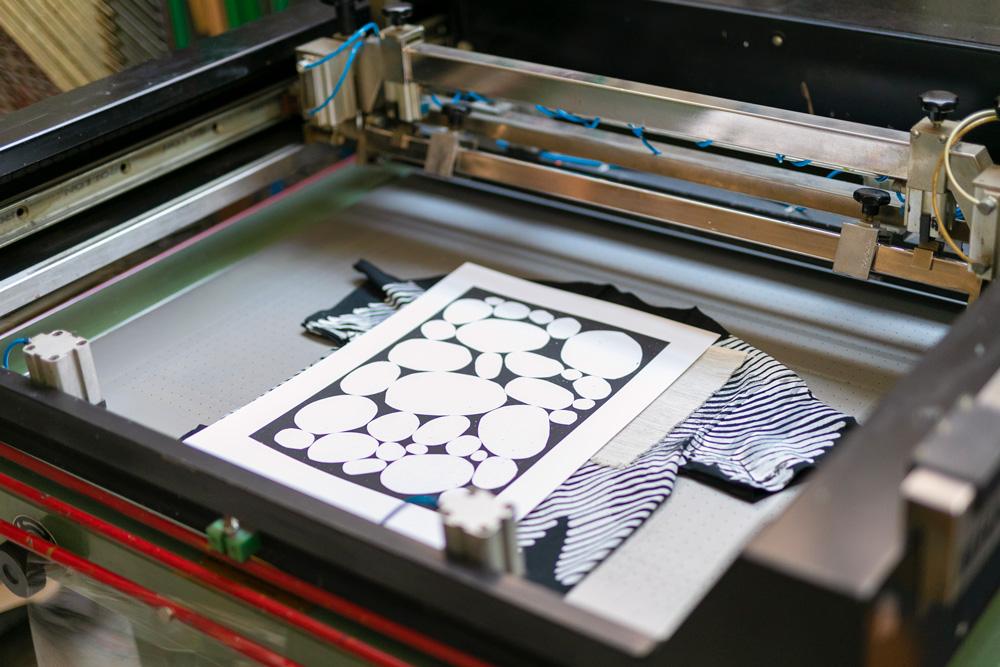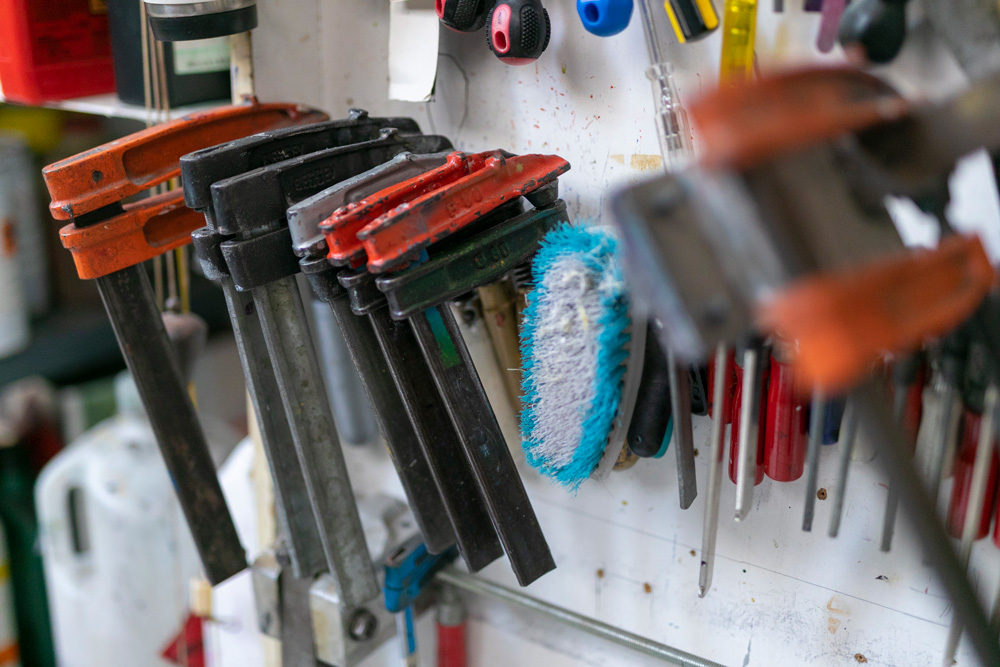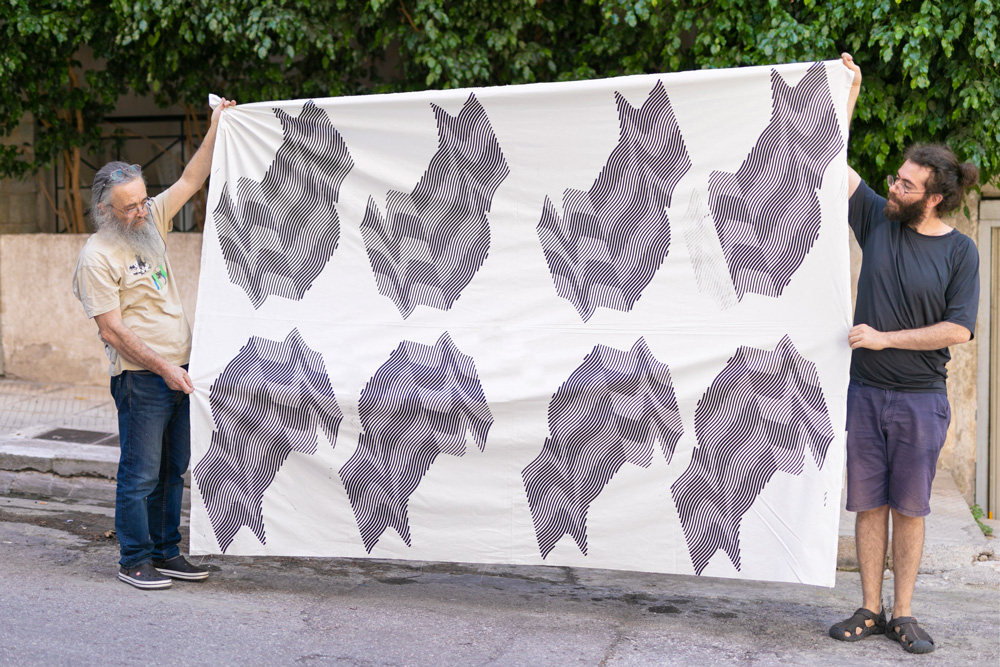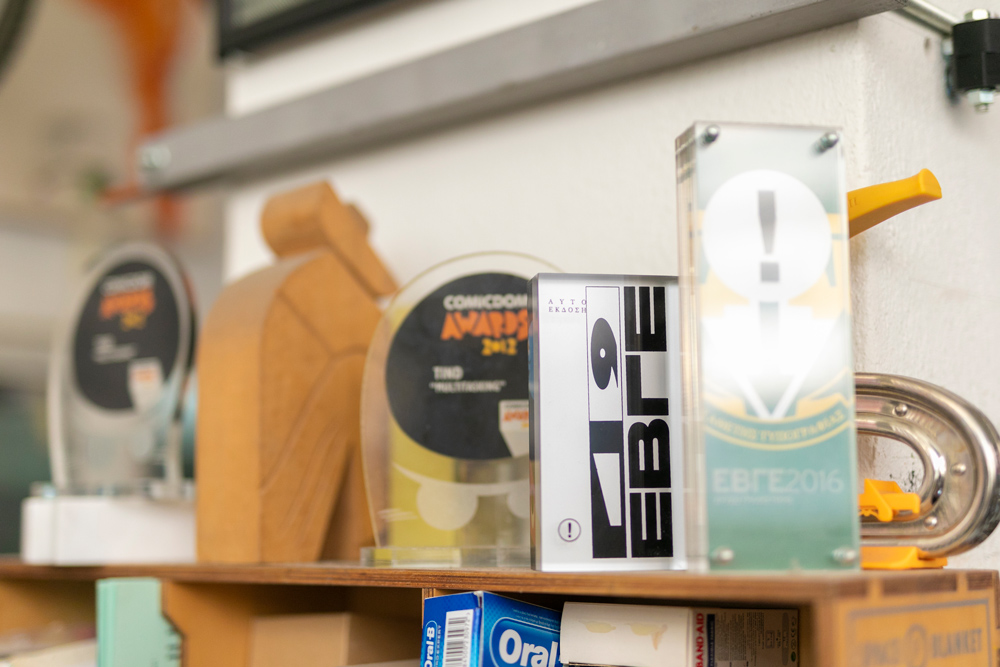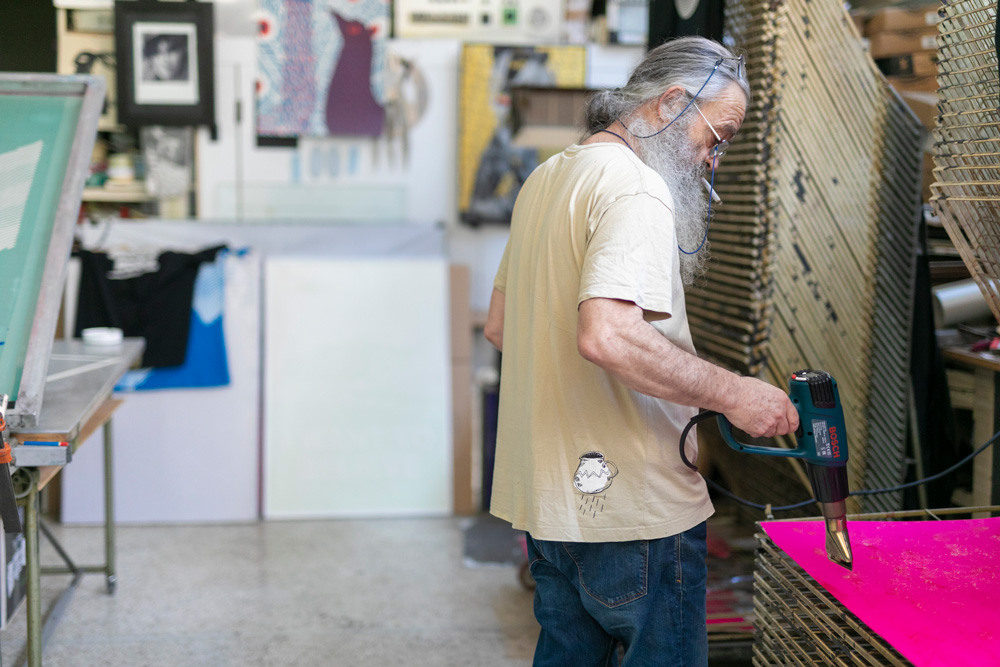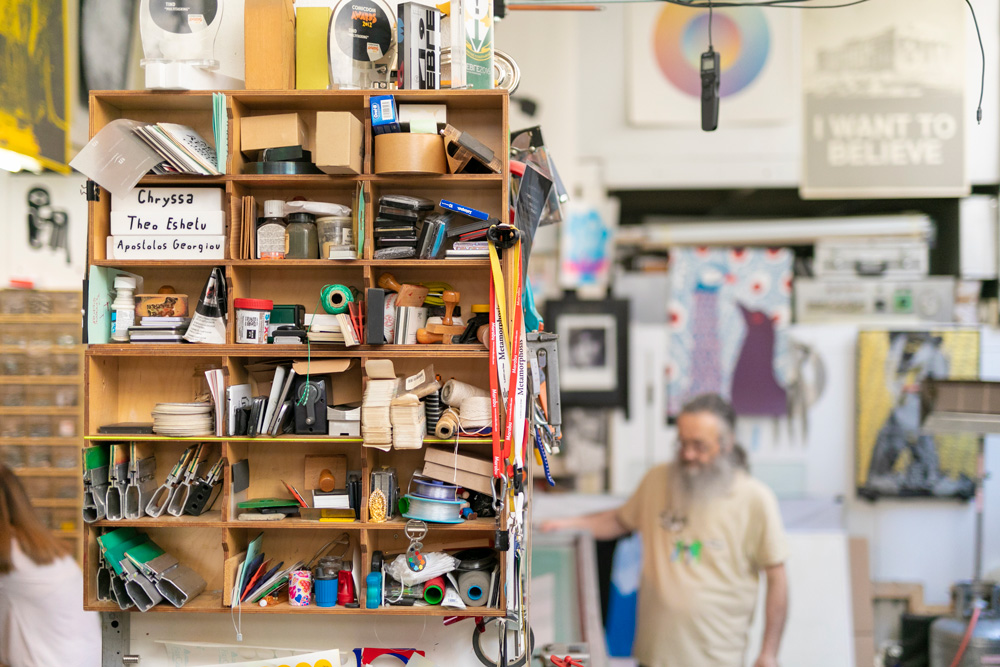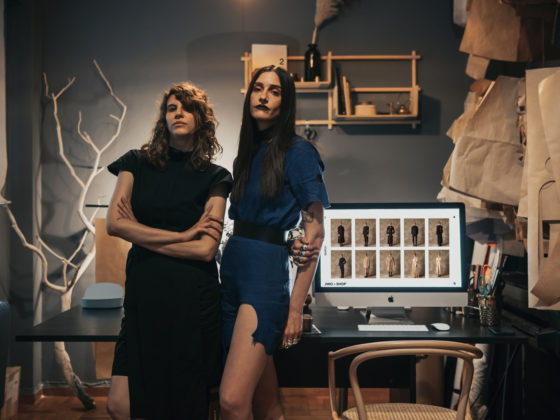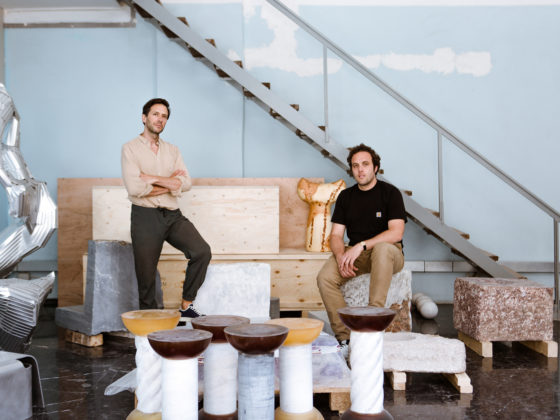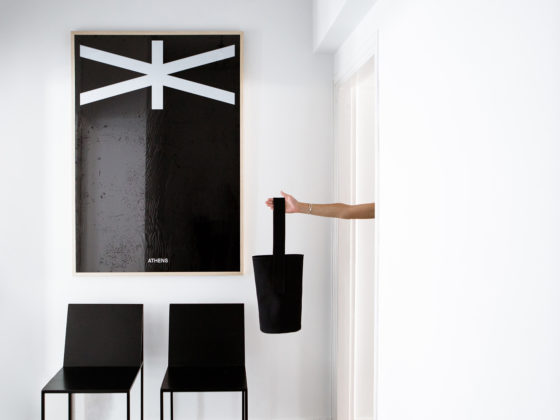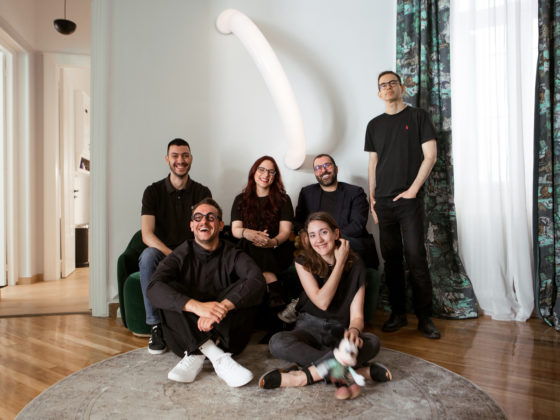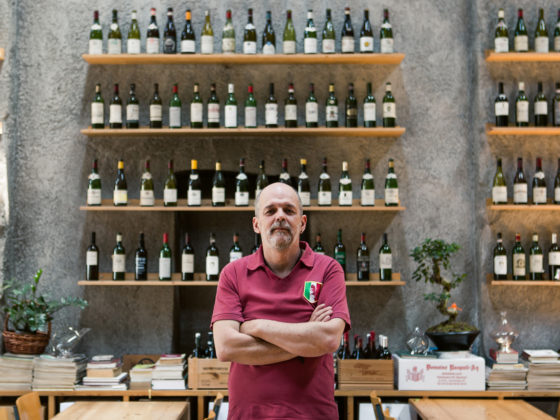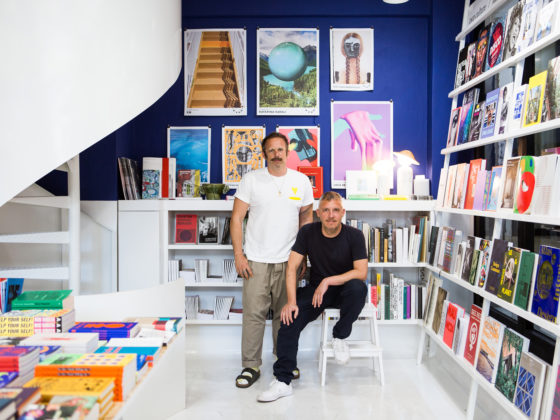Chris Angelakis and his son Manolis Angelakis are the proud owners of Tind, a silkscreen printing studio in Neos Kosmos, Athens, Greece. They offer high quality silkscreen printing services and as they love to say they “swallow inks and spit prints”.
Tell us a few things about your story.
Manolis: I was born here, I was lullabied in darkrooms and I was spoon-fed with fluorescent colors. Everything happened by chance. Neither my father nor I intended to stay here. I studied Graphic Design and over the years I stopped worrying and fell in love with the medium.
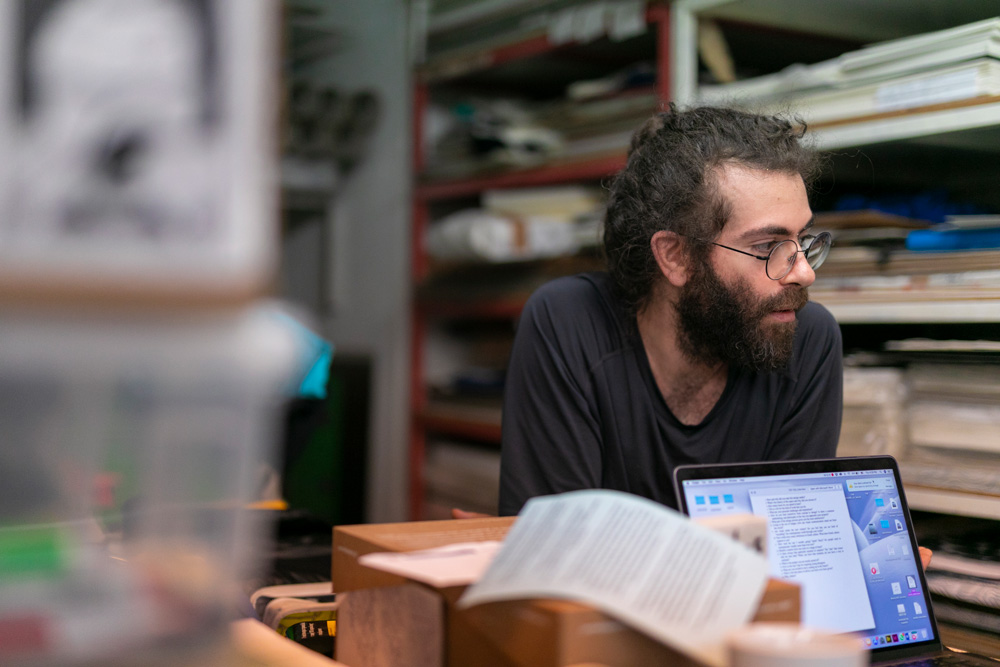
Chris: As a child, I was pretty handy with both sketches and paintings. I left my village and moved to Athens for university studies, but I was disappointed from the very first week. However, I made the decision to stay in Athens. I started searching about everything I could learn. I was interested in Photography, but there was no School of Photography back then; So I accidentally found the silkscreen printing process in a workshop. That’s where I got stuck. I’ve been doing this since 1972. In 1976 I made my first studio in Petralona. I moved in this studio in August ’83.
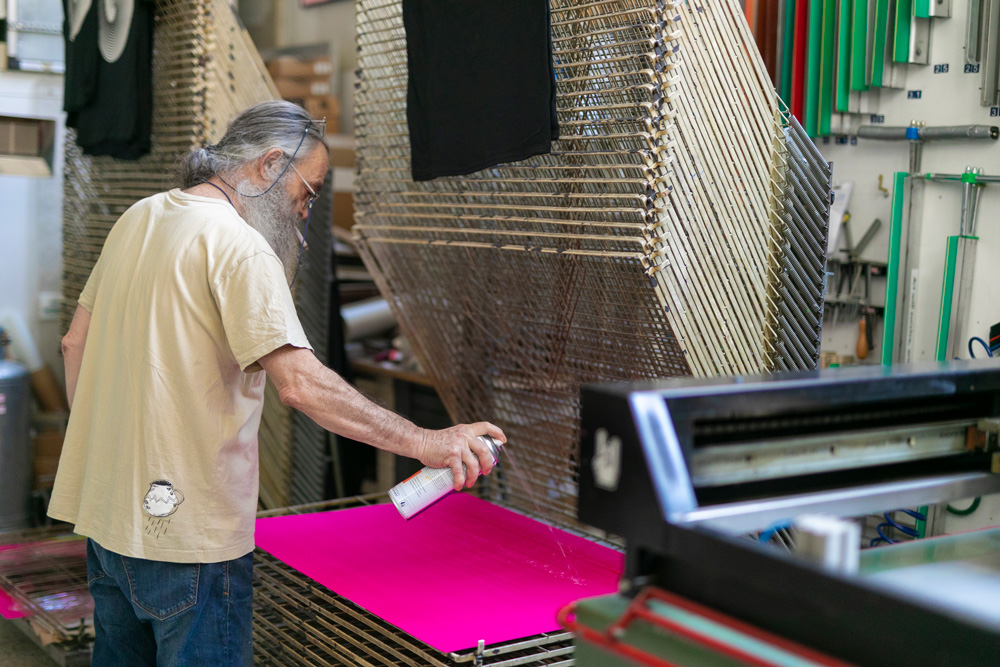
Why did you choose this space?
Chris: It was a brand-new empty space. Back in those years, it was pretty difficult to have a three-phase electric current and getting a silkscreen printing license was a big-big story and still is. We decided to do it here just for us.
You did this for you, but we all seem to know about it now.
Chris: I don’t like to work on projects with too much hassle. I know I’m going to be worried enough and I don’t want to.
Manolis: We always discuss on what each collaborator wants to do and how he imagines the final result. I like to know that there’s going to be a benefit for him after working with us. It’s like going to the doctor; You don’t actually know what to tell him. You’ll just tell him “I’m in pain” and he has to help you find out where does this pain come from. We are here to discuss and prepare our collaborators for what’s following, the difficulties and the whole process. And for God’s sake we are not doctors.
Is there a competition in silkscreen printing market?
Manolis: There is and there is not. Silk screen printing as a printing technique covers a huge range of applications, i.e. your car, your mobile phone, the olive oil bottle, your clothes. Everything is silkscreen printed. There are many colleagues in the silkscreen business. What probably makes us stand out from the crowd is that we happen to take on the most intricate projects, both mechanically and artistically. There are a lot of old-fashioned professionals like my father or new guys in the business like me. We combine both, working together and we choose to make limited projects with a special degree of difficulty and with lots of love.
How did everyone hear about it?
Manolis: Door to door every day. At some point someone trusts you and you get to create something nice with him. At the same time, the internet has helped us present our work on a wider audience 24 /7. Every post we upload works like a diary to me, so I can look back and see how I dealt with a project. But it is also important for people to see the process, so they can understand that the final work is not made by just pushing a button.
Manolis: I also happened to have studied Graphic Design in Vakalo Art and Design College, so I understand well the worry of the graphic designer. I can relate to someone that has worked on a design for many hours and wants a very specific result for it. We always prefer to have partners, rather than customers. We often refuse to proceed on some collaborations and this comes at a cost. We invest in the difficulty of its project and to the evolution of our know-how.
How old is the silkscreen printing method?
Manolis: It is the oldest printing method available. Older than typography, despite the fact that most people believe that typography was the absolute revolution. Silk screen printing does not have this glamor element on the back. It exists in many cultures and what sets it apart is that it is associated with both applied and fine arts. Most people know that silkscreen means Andy Warhol. This is only 100 years of its rich history. Silk screen printing has a history of over 2000 years.
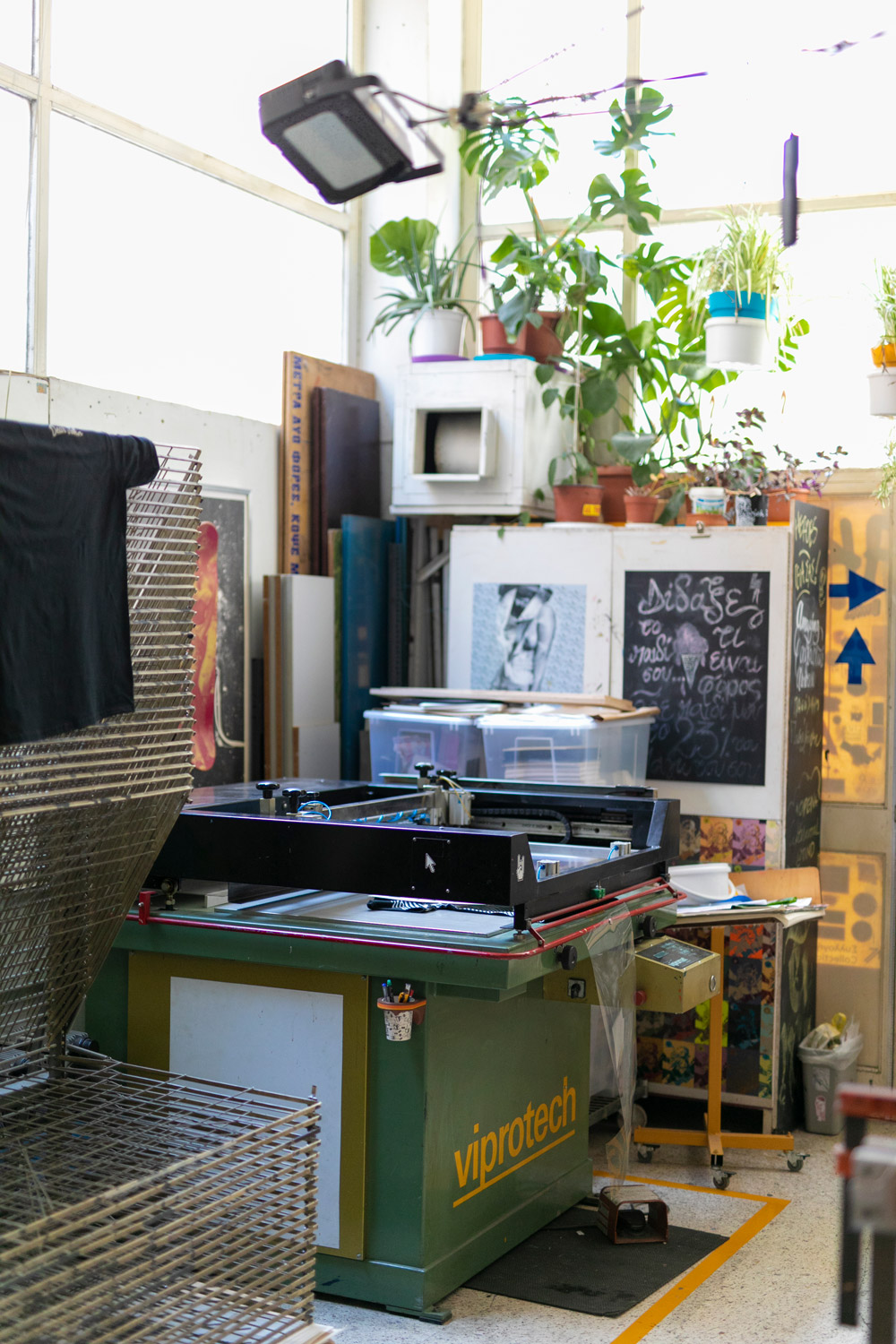
Why it became so popular from Andy Warhol?
Manolis: History is still being written and the way it is being written is important.
Chris: He just managed to sell it the right way.
Manolis: In Belgium there is a mandatory post-graduate level of 2 years, during which a person learns about silkscreen printing. In Greece we don’t know much about this. There is not even a Greek terminology for it.
Chris: (Showing us a portrait of Valerie Solanas hanging in the wall) She is the saint of silkscreen printing! The woman who shot Warhol. 4 bullets and she didn’t hit the target.
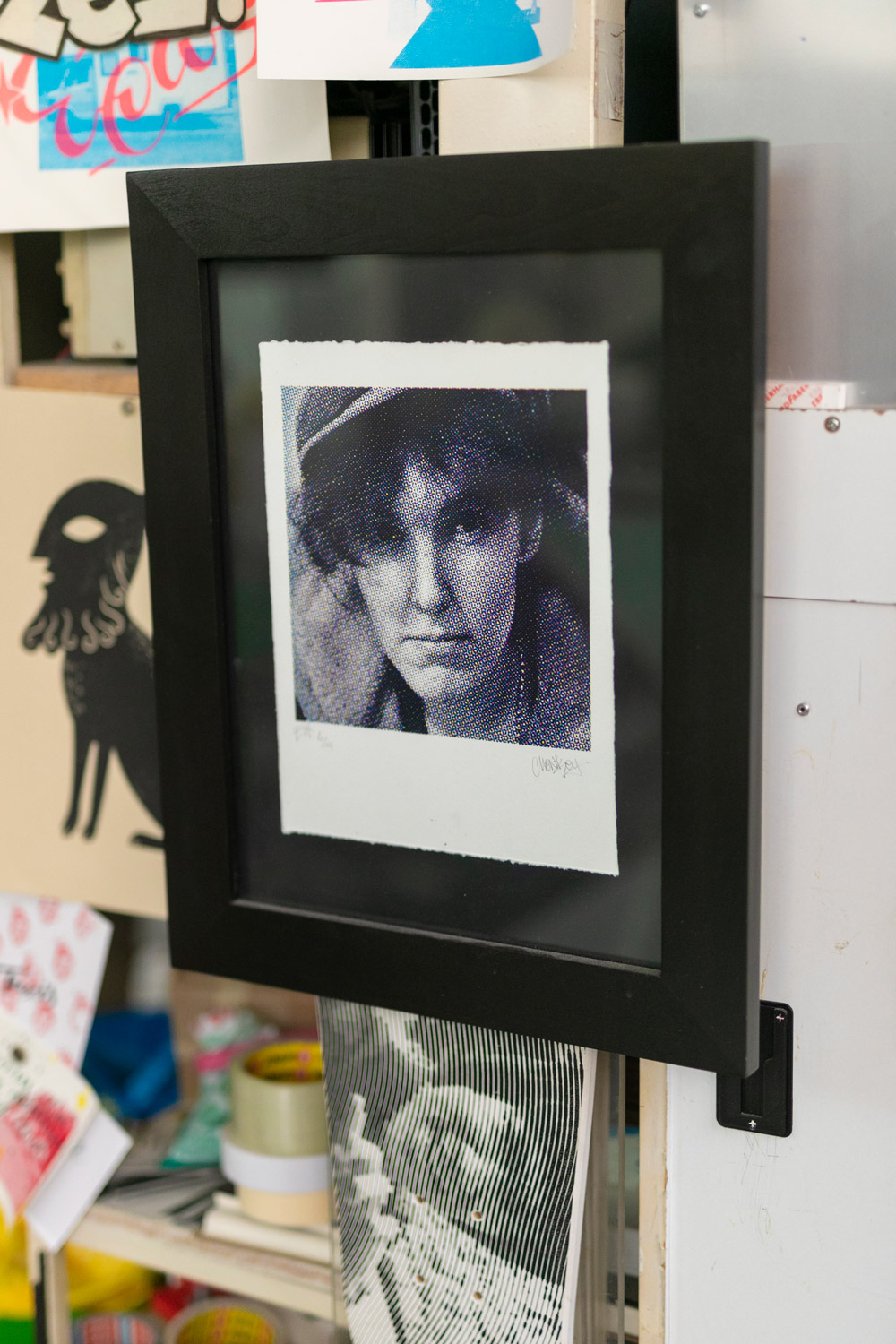
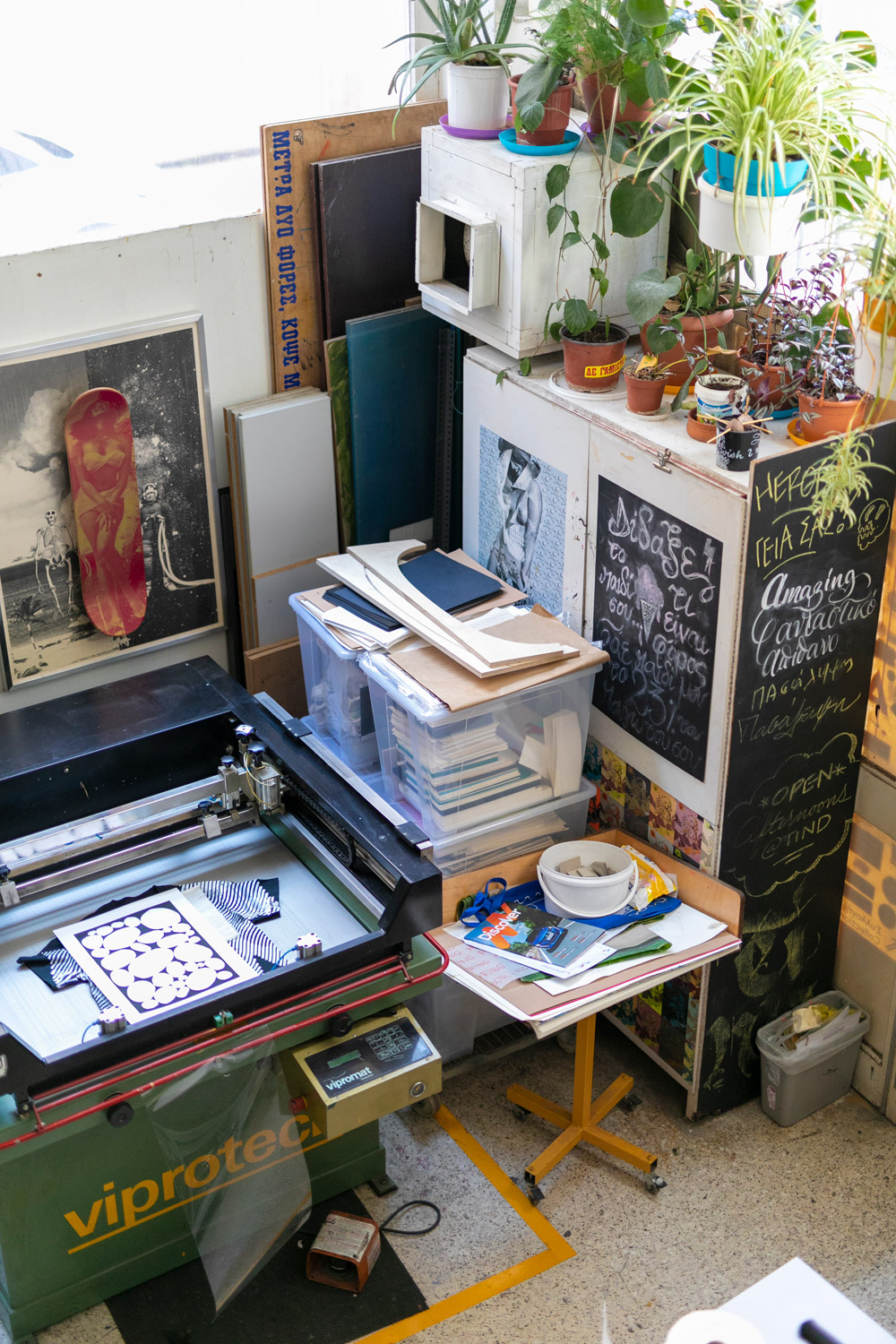
Didn’t you want Andy alive?
Manolis: We’re not really into this celebrity-printer culture, this “rockstar” type ideology focused on sales.
Chris: Serious silkscreen printers don’t like Andy Warhol. Other people were printing for him; he did not mention any of his colleagues ever. He just made money.
Manolis: For us here, it is an attempt to rewrite this history, silkscreen has no fathers. It’s a whole industry working behind it to produce all these inks, gauze and spatulas… and that’s why it survives.
Tell us a few things about the history of silkscreen printing.
Manolis: For me, silkscreen printing begins with the first person putting his hand on the wall of a cave, chewing a flower, making color with his mouth, blowing it in the air and making a footprint. It is the way he discovers the logic of the multiple repetitive pattern through an “obstacle”, a stencil. Silk screen printing is exactly this; you just put an obstacle on a fabric (which is no longer silk). Until the 20th century it was purely industrial, a need for labeling, a need to distinguish what is what.
Chris: The man needs a design on his clothes, it is a human need. Silk screen printing could make a design for everyone, no matter the profession.
Everything has a design on, but we don’t really know how it’s done.
Manolis: Yes, the best thing about silkscreen printing is its unsung story. It is a humble medium. We happen to be 2 generations of people who like to do this.
Has digital technology helped you?
Chris: Yes, we can see it in this piece that we are printing today. It is a curve, a wave with length and height. It’s simple mathematics. In the old-school way, this would be impossible to be designed and so to be printed.
Manolis: Silkscreen printing has its ups and downs in its history. After the Great Depression in US, everything was falling apart. People had to find jobs, they had to spread a propaganda, they had to make posters. How could they print colourful posters quickly? Silkscreen printing.
Who would take care of it? Painters. This was the way in which the next generation of artists got introduced to the medium (Pop Art artists like Warhol, Rosenberg etc.). They saw the mass of the medium, how it communicated with the crowd and made it their own weapon. The same thing happened in May 1968. No one came out to say “I created this message”. Everyone signed under one name, like Atelier Populaire. During the 90s, digital printing came out, so silkscreen started to fall down
How did silkscreen make a comeback?
Manolis: It is the crafty aspect of it. It never left. The fidelity and depth of color cannot be replaced. You can’t sell a work of art, having it digitally printed. When Christie’s creates a separate department which now sells silkscreens, it has a meaning.
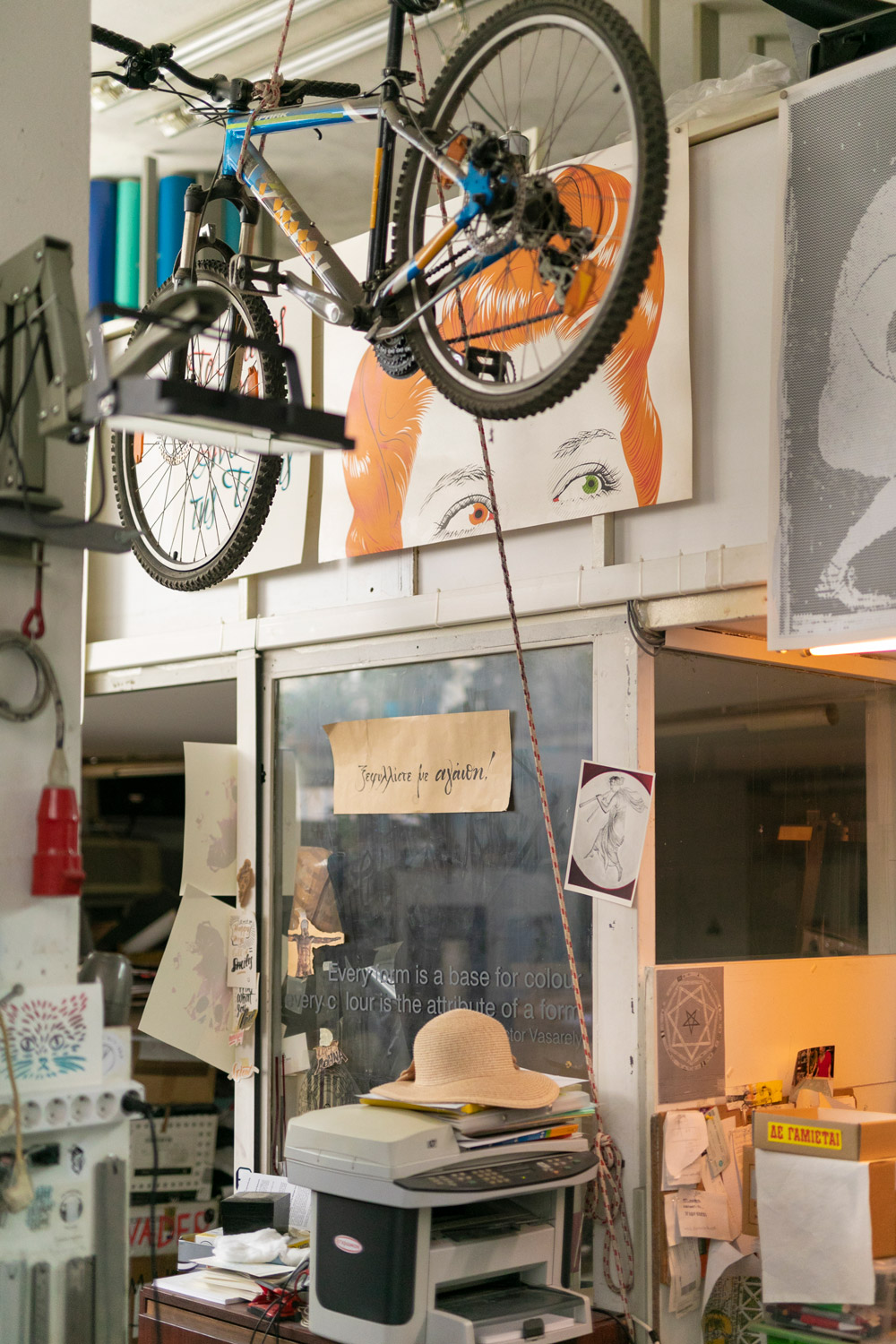
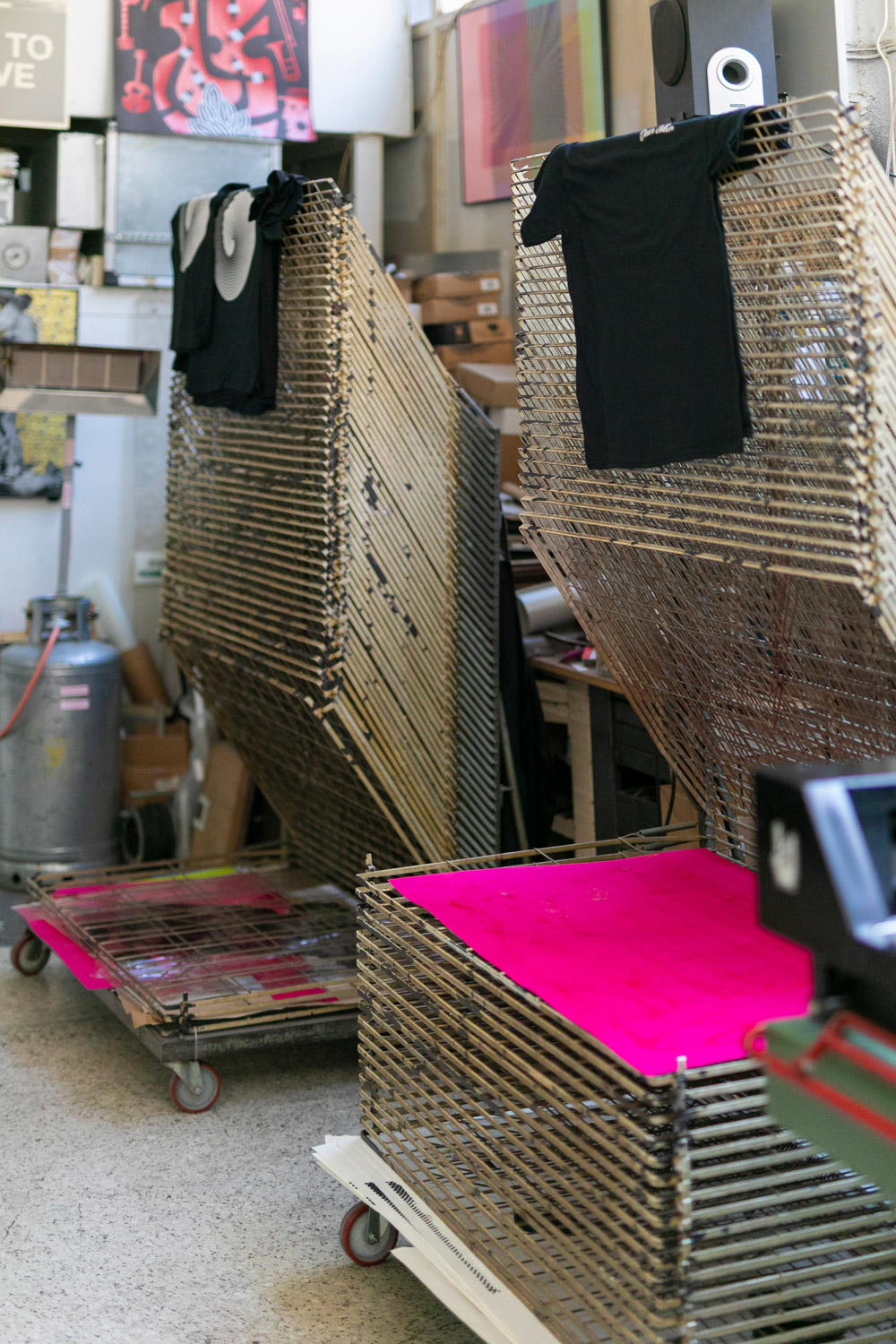
When something is so old, it carries its history and that makes it important.
Manolis: It’s such a special job. It’s based on collaboration and that’s its legacy. There is an excerpt from 1963’s Complete Book of Screen-printing, that talks about the eternal conflict between the artist and the silkscreen printer. Rumors say that in hell, the creator will be forced to print his works and the silkscreen printer will have to become an artist. A good artist knows how to design the work that will be printed and understands how it can be done. If an artist wants us to get him the same green that he putted in the painting with oil, well this is absolutely not possible!
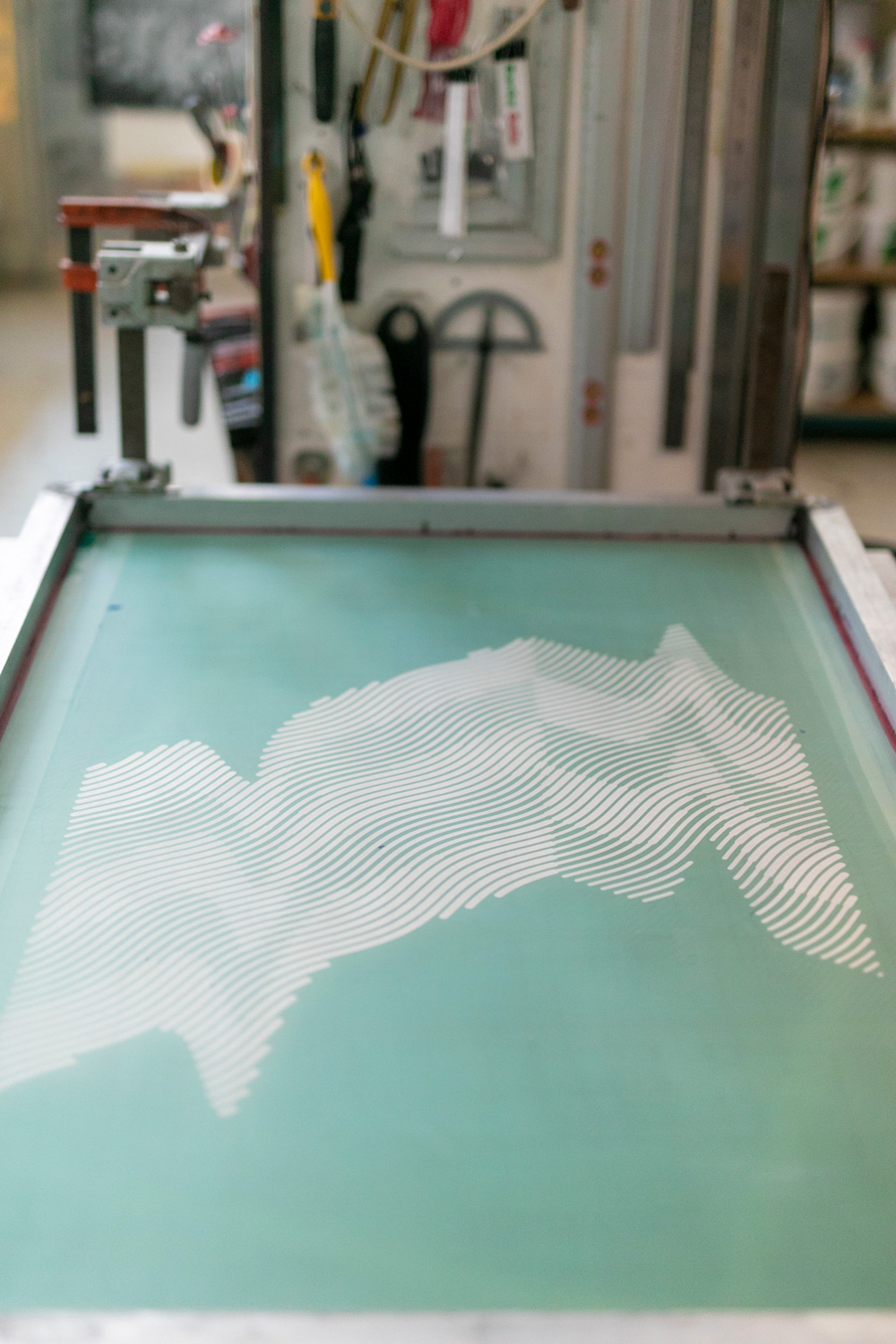
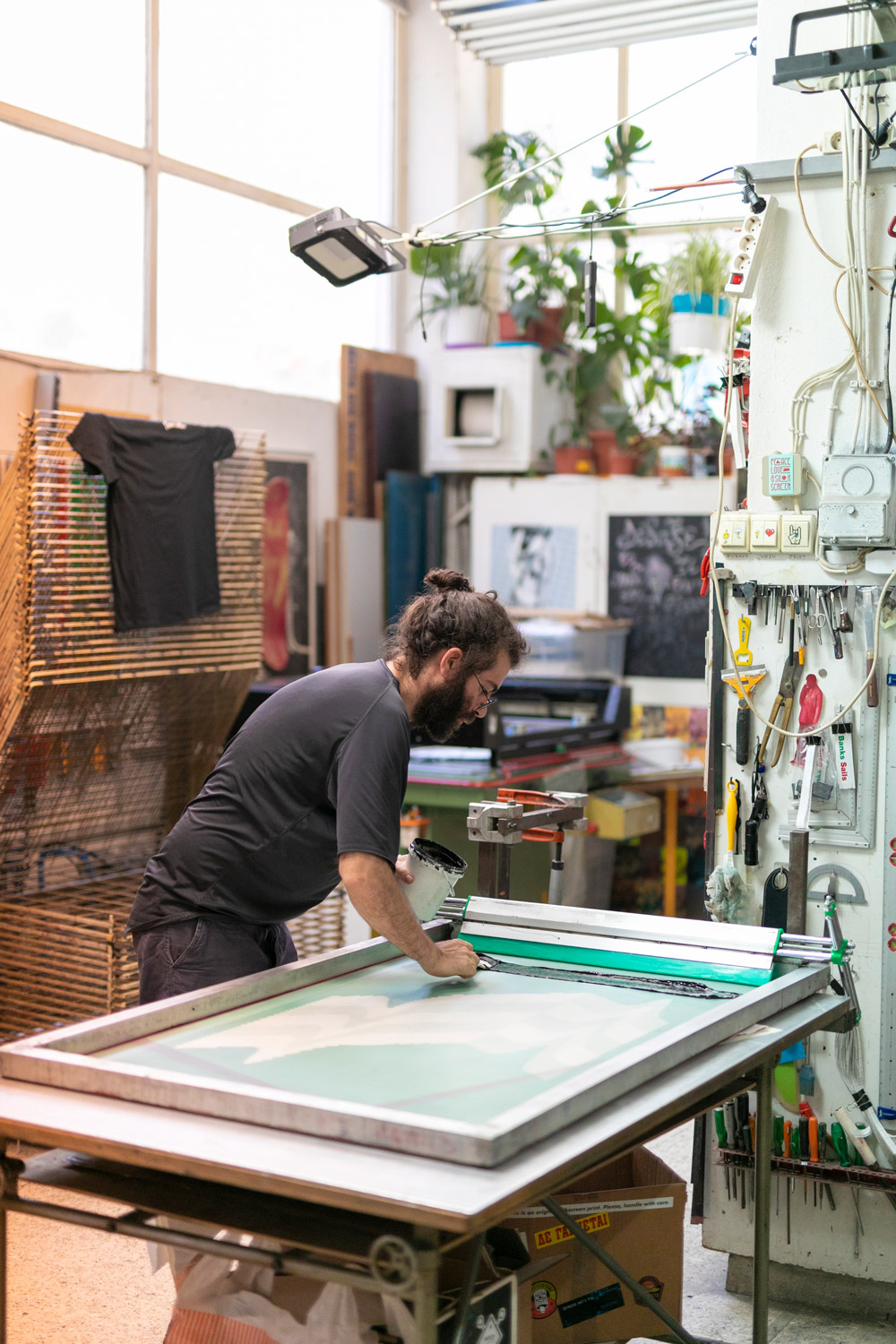
Is this good or bad for someone who wants to print with absolute fidelity to the original work?
Manolis: It is actually perfect. No great artist ever reproduced his work in silkscreen. No one made a silkscreen painting. If the artist is alive, we can’t treat him like “come on, make ten copies of this”. These things are alive.
What is the project that you are mostly proud of?
Manolis: They are all our “children”. But in a personal and sentimental way, it’s a portrait of my father that we printed during a summer that we didn’t go on vacation. We did it because we wanted to print a big piece of work.
What is the best piece of advice you’ve been given?
Chris: In 1973, a friend told me to prepare a portfolio with my work and go meet Yannis Tsarouchis with him. So, we went and I left there my work. He didn’t say a thing.
After a month, he called me and said, “Can you bear hunger?” I said no. And he said “Be a silkscreen printer, not a painter”.
And I kept that advice. I made it happen.
The second best advice has been given to me by an old printer. I asked him if I should go to the ministry of industry and patent my works. He told me:
“No, never. Be happy to be copied”.
Manolis: The best advice has been given to me by my father, when he asked me what I wanted to do in my life. I said I didn’t know. So, he said to me:
“Find something that will leave you time and money to do what you want”.
Silkscreen will always take you where it wants you to go. And it’s usually better than you have imagined.
Is error superior to art?
Manolis: This is an inscription in Syros island by a craftsman. When I was working as a set designer for filming a time period movie, they brought me a book called “The Folk Inscription in Greece”, and this was written in the foreword. We adopted it. We liked it so much and used it so many times that many people now think it’s ours. Well, it’s not.
